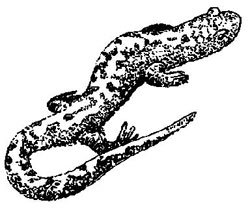One time we were having lunch together over in the [Erb Memorial] Union. At that time I found out that he had been the park naturalist. It was an interesting discovery for me, of course.
He became naturalist after another man, Earl Homuth, suddenly left in 1928. Wynd was the head naturalist in 1929 and 1930 (13).
One of the interesting things about him was that he patented a botanical discovery and it really paid off for him financially. He was independently wealthy and didn’t have to work. He remained in Eugene after ceasing to have anything to do with the department.
I was thinking about another naturalist, Chuck Yocum. Did you know him very well?
I knew him very well. He was at the park both summers that I was there. Chuck was a valuable person for us to have because he was an artist. You saw his illustrations in our publication.
Did he precede you in being on the staff?
No. He was on the staff at the university in Pullman at the time that Don Farner became dean of the graduate school. I believe it was that contact that brought Yocum to Crater Lake. As I said, he was such a valuable person because of his artistic ability. I remember his drawings of the quillwort. He was a wonderful person to have around if you were illustrating a journal.
This came to mind because of some publications that came from Crater Lake and I thought of Doc Ruhle’s road guide. Was that in use at the time you were there?
It seems to me that I remember the Doc Ruhle road guide, but it is hazy in my mind. That was the kind of thing that Doc Ruhle could do very well. He wasn’t a biologist, you know. His Ph.D. was in chemistry. The explorations around the park involved biology, but Doc was the kind of individual that was very eager to pick up on any kind of information other people were capable of giving him.


